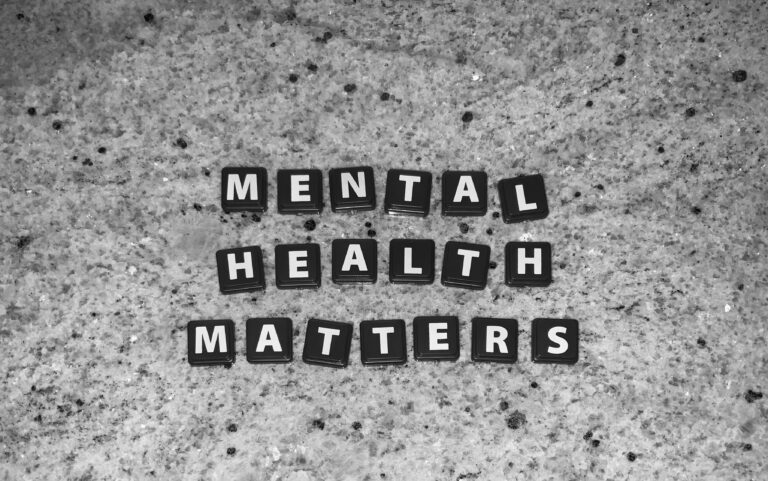Did you know that how you think about challenges can change your brain? Research shows that cognitive reframing—shifting your perspective on difficult situations—can reduce stress hormones by up to 23% and improve problem-solving abilities by 45%.
Life throws curveballs at everyone. Challenges, whether it’s a tough project at work, relationship conflicts, or unexpected setbacks, are inevitable. But here’s the good news: you have more control over your response than you think.
Cognitive reframing is a powerful tool that helps you turn stress into a strength by changing how you see and respond to difficulties. A positive attitude is key to developing mental flexibility and resilience to approach challenges with optimism and a growth mindset. Instead of being overwhelmed by problems, you can see them as opportunities for growth and learning.
This isn’t about toxic positivity or pretending everything is fine. It’s about developing mental flexibility to navigate life’s ups and downs with more resilience and emotional balance. Cognitive reframing can improve our lives by helping us better navigate challenges and build habits that support well-being. For health-conscious people like you, mastering this skill can be as powerful as proper nutrition and exercise.
This guide will teach you about cognitive reframing, why it’s crucial for mental health, and give you six practical steps to start turning challenges into opportunities for growth. Reframing can also change how we see the world and lead to more optimism and emotional balance.
What is Cognitive Reframing?
Cognitive reframing is a psychological technique that involves consciously changing one’s perspective on a situation to create a more balanced, realistic, or helpful view. Think of it as mental problem-solving that focuses on changing one’s thoughts, not circumstances.
A related therapeutic technique is cognitive restructuring, which targets explicit maladaptive or harmful thought patterns through structured mindful effort, often with the guidance of a mental health professional.
Our brains are wired to notice threats and problems to keep our ancestors alive. But this can trap us in negative thinking patterns that increase stress and limit our potential. Reframing helps you step back from automatic negative thoughts and consciously choose more constructive perspectives. It works by identifying unhelpful thought patterns such as common cognitive distortions and replacing them with more balanced, evidence-based thinking.
Recognizing these common cognitive distortions is key to improving mental health and well-being. For example, if you miss a workout session, your automatic thought might be “I’m so lazy and undisciplined”. Through reframing, you could shift this to “I missed one session, but I can get back on track tomorrow. Everyone has off days”. Reframing can also address other unhelpful thoughts that may be holding you back.
This isn’t about denying reality or forcing fake optimism. It’s about finding more accurate and helpful ways to interpret situations. When you practice reframing regularly, you build mental resilience that helps you bounce back from setbacks faster and maintain emotional balance during stressful times.
Why Reframing Challenges is Important for a Healthy Mindset
Your thoughts impact your physical and mental health. When you see situations as threatening or overwhelming, your body releases stress hormones like cortisol and adrenaline. While these responses are helpful in real emergencies, chronic activation can lead to anxiety, depression, sleep problems, and weakened immune function.
Research from Stanford University shows that people who practice cognitive reframing show measurable changes in brain activity. The prefrontal cortex (responsible for rational thinking) becomes more active, and the amygdala (your brain’s alarm system) becomes less reactive. This neurological shift creates a foundation for better emotional regulation and more transparent decision making.
Notably, patients with mental health conditions such as depression have shown improvement through the use of reframing techniques, as these approaches help incorporate patients’ experiences and thoughts into developing healthier mindsets and managing emotions.
The evidence-backed benefits of reframing include:
Reduced Stress
Studies show reframing techniques can lower cortisol production and reduce physical tension in the body.
Improved Emotional Regulation
People who practice reframing feel more in control of their emotions and less overwhelmed by daily challenges.
Enhanced Problem Solving
When negative emotions don’t consume you, your brain can focus more on finding solutions.
Better Relationships
Reframing helps you respond to conflicts more thoughtfully, leading to better communication and stronger connections.
Increased Resilience
Regular reframing practice builds mental flexibility that helps you adapt to change and recover from setbacks faster. A study in the Journal of Personality and Social Psychology found that people who consistently reframed stressful situations improved cardiovascular health and reported higher life satisfaction.
This research shows how mental practices can lead to physical change. Seeking guidance from mental health professionals can also help you implement reframing strategies effectively so you get the support you need when you need it.
Step 1: Recognise and Label Your Thoughts
The first step in cognitive reframing is becoming aware of your inner dialogue. Many negative thoughts happen so automatically that we don’t even notice them. Learning to catch these thoughts is key to change.
Start by paying attention to your emotional reactions throughout the day. When you feel stressed, anxious, frustrated, or overwhelmed, pause and ask yourself, “What am I thinking right now?” Often, a stream of negative thoughts contributes to your emotional state.
Keep a thought journal for one week. Each time you notice a strong emotional reaction, write down:
- The situation that triggered the emotion
- The specific thoughts going through your mind
- The intensity of the emotion (rate it 1-10)
- Any physical sensations you notice
Using a similar approach, helping a child recognise and label their thoughts can foster emotional resilience from a young age.
This helps you identify patterns in your thinking. You may find you frequently catastrophise (imagine the worst-case scenario), engage in all-or-nothing thinking (see situations as completely good or bad), or personalise situations (assume everything is your fault).
Here are some examples of common negative thought patterns:
- “This always happens to me.”
- “I can’t handle this.”
- “Everyone else has it figured out.”
- “I’m not good enough.”
- “Things will never get better.”
Recognition is powerful because it creates space between you and your thoughts. Instead of being swept away by negative thinking, you can observe it objectively and choose how to respond.
Step 2: Challenge and Reframe Your Perspective
Once you’ve identified a negative thought pattern, it’s time to challenge its accuracy and helpfulness. Most automatic negative thoughts are either exaggerated, based on incomplete information, or focused on outcomes you can’t control.
Start by asking yourself these powerful questions:
“Is this thought based on facts or assumptions?” We often jump to conclusions without having all the information. For example, if a friend doesn’t respond to your text immediately, you might assume they’re upset with you. But there could be a thousand other reasons. Consider what happened versus what you believe happened—this is the key to effective cognitive reframing.
“What would I tell a close friend in this situation?” We’re much kinder and more rational when advising others. This question helps you access the same compassionate wisdom for yourself.
“What’s another way to look at this?” Challenge yourself to find at least three alternative perspectives. This mental flexibility breaks you from tunnel vision and opens up new possibilities.
“What can I learn from this?” Reframing challenges as learning opportunities turns them into valuable experiences contributing to your growth.
Here’s a practical example of reframing in action:
Original thought: “I completely failed that presentation. Everyone thinks I’m incompetent and I’ll probably get fired.”
Reframed thought: “The presentation didn’t go as well as I hoped, but I got useful feedback. Most people were supportive, and my manager gave me specific suggestions for improvement. This is a learning opportunity that will make me a better presenter.”
Notice how the reframed version acknowledges the disappointment without catastrophizing. It focuses on facts, not assumptions, and identifies growth opportunities. Cognitive reframing helped a student reduce test anxiety by focusing on what happened during exams, not assuming the worst, and improving performance and confidence.
Step 3: Focus on Solutions, Not Problems
One of the most powerful reframing techniques is shifting your mental energy from dwelling on problems to generating solutions. This turns you from a passive victim of circumstances into someone who deliberately acts as a problem solver, taking intentional steps towards positive change.
When faced with a challenge, resist the urge to ruminate on everything that’s wrong. Instead, ask yourself, “What can I do to improve this?” This simple shift in focus activates your prefrontal cortex and reduces stress-inducing thoughts.
Create solution-focused lists by writing down:
- Three things you can do immediately
- Resources or people who can help you
- Lessons you can apply from similar past experiences
- One bigger goal to work towards over time. For example, if you’re struggling to stick to your exercise routine, instead of thinking, “I’m so out of shape and lazy,” try: “I can schedule three 20-minute walks this week, ask my friend to be my workout buddy, and set out my gym clothes the night before.”
Break down bigger challenges into smaller, more manageable steps. This prevents overwhelm and creates momentum through small wins. Reframing your perspective can lead to changes in behaviour that support positive outcomes. Each completed action builds confidence and reinforces your ability to handle difficulties well.
Remember, focusing on solutions doesn’t mean ignoring your emotions. Acknowledge how you feel, then channel that energy into productive action. This balance of emotional awareness and practical problem-solving creates sustainable resilience.
Step 4: Practice Self-Compassion
Self-compassion is a key part of healthy reframing. Many people are their own toughest critics, using an inner voice they would never use with a friend. This self-criticism amplifies stress and makes challenges feel even more overwhelming.
Self compassion involves treating yourself with the kindness you would show a good friend facing difficulties. Research by Dr. Kristin Neff shows that self-compassionate people experience less anxiety and depression and more motivation and resilience.
Practice self-compassion through these techniques:
Acknowledge your humanity: Remember, making mistakes, facing setbacks, and struggling with challenges is part of the human experience. You’re not alone in this.
Use gentle self-talk: Replace harsh inner criticism with supportive language. Practice positive self-talk by consciously choosing words encouraging and uplifting, like “Everyone makes mistakes.” Instead of “I’m so stupid for making that mistake,” try “Everyone makes mistakes. I can learn from this and do better next time.”
Take care of your basic needs: When faced with challenges, make sure you’re getting enough sleep, nutrition, and physical activity. Self-compassion includes practical self-care.
Practice the self compassion break: When you notice self-criticism, pause and say: “This is a moment of suffering. Suffering is part of life. May I be kind to myself in this moment.” Self-compassion doesn’t make you weak or lazy—research shows it increases motivation and resilience. You need to be patient with yourself as you go through change, just as a patient would need time to shift their mindset. When you feel supported and understood (even by yourself), you’re more likely to take healthy risks and bounce back from setbacks.
Step 5: Use Visualization Techniques
Visualization is a powerful tool for reframing challenges because it helps your brain rehearse positive outcomes and build confidence in your ability to handle difficult situations. Athletes have used visualization for decades to improve performance; the same principles apply to managing life’s challenges.
When faced with a problematic situation, spend 5-10 minutes visualizing yourself handling it successfully. Make the visualization as detailed and realistic as possible:
See yourself taking confident action: Imagine the specific steps you’ll take and how you’ll feel as you go through them.
Include potential obstacles: Visualize yourself calmly handling setbacks or unexpected complications. This mental rehearsal prepares you for reality.
Focus on the positive emotions: Feel the satisfaction, relief, and pride you’ll experience when you’ve navigated the challenge.
Engage all your senses: What will you see, hear, and feel when you’ve overcome this difficulty? Rich sensory details make visualizations more powerful.
For example, if you’re nervous about a difficult conversation with your boss, visualize yourself speaking calmly and confidently, listening to their feedback, and finding mutually beneficial solutions. See yourself leaving the meeting feeling proud of how you handled yourself. Imagining a prosperous future can motivate your actions and help you focus on long-term well-being.
Guided visualization apps like Headspace or Calm offer structured sessions for specific challenges, such as public speaking, job interviews, or health concerns. Regular visualization practice builds mental resilience and makes positive outcomes feel more achievable. Incorporating visualization into our daily lives can make reframing a consistent and effective habit.
Step 6: Find Growth Opportunities in Setbacks
The most resilient people share a common trait: they consistently find ways to grow from their setbacks. This doesn’t mean they enjoy challenges or pretend they’re easy. Instead, they’ve trained themselves to extract value from difficult experiences, just as muscles grow stronger after physical exertion. Personal growth often comes from overcoming adversity.
Every setback contains potential lessons and opportunities for development. The key is to approach them with curiosity, not judgment. Ask yourself:
“What skills did I develop from this?” Maybe a project failed, and you learned better time management or clear communication.
“How did I get stronger or more resilient?” What inner resources did you discover or develop while going through the difficulty?
“What would I do differently if faced with the same situation?” This question helps you learn from experience without self-criticism.
“How can this help me connect with or help others?” Our struggles often give us empathy and wisdom that can help others facing similar challenges. Share your experience with friends, and you’ll build resilience as you support each other through tough times.
Many successful people credit their setbacks with teaching them valuable lessons. Oprah Winfrey has said being fired from her first TV job led her to find her true calling. Steve Jobs described being fired from Apple as devastating but ultimately liberating, as it led to some of his most creative and successful ventures.
This doesn’t mean you should seek setbacks or minimize their difficulty. Instead, develop the mental habit of looking for growth opportunities once you’ve processed the initial disappointment or frustration.
The Power of Mindfulness in Reframing Stress
Mindfulness is a powerful practice that can help you reframe stress and cultivate a healthy mindset. Focusing on the present moment and your breath can reduce stress and anxiety even in the most challenging situations. Mindfulness practices – meditation, deep breathing, or simply pausing to notice your surroundings – allow you to stay calm and centered and manage stressful situations as they arise.
Regular mindfulness practice increases self-awareness so you can recognize negative thought patterns before they spiral into a negative state. When you become aware of your thoughts and feelings in the present, you can shift your perspective consciously. Instead of reacting to stress, you can reframe your experience and focus on positive thoughts and solutions.
Incorporating mindfulness into your daily life doesn’t have to be complicated. Even a few minutes of mindful breathing or a short meditation can significantly affect your mental well-being. Over time, these practices will help you develop a more positive outlook, reduce stress, and build resilience. By making mindfulness a regular part of your life, you’ll find it easier to cope with negative emotions and maintain a positive mindset no matter your challenges.
Set Boundaries and Prioritize Self-Care
Setting boundaries and self-care are key to a healthy mindset and managing stress. When you learn to say no and set realistic limits, you protect your time and energy, which reduces feelings of overwhelm and anxiety. Boundaries allow you to focus on what matters and make navigating challenges easier without sacrificing your well-being.
Self-care means making time for activities that support your physical and mental health. Regular physical activity, for example, can boost your mood and reduce stress by releasing positive-feeling endorphins. Healthy eating, enough sleep, and relaxation practices are key components of self-care that contribute to a more positive mindset and better mood.
By making self-care non-negotiable, you’re supporting your well-being and creating the foundation for healthier relationships. When you communicate your needs and expectations clearly, you foster mutual respect and understanding with others. This leads to more positive feelings and greater resilience to handle life’s challenges.
Remember, setting boundaries and practicing self-care is a process. Start by identifying one area where you can make a small change—perhaps scheduling regular exercise, setting aside time for relaxation, or saying no to extra commitments. Over time, these practices will help you manage stress better, improve your mood, and cultivate a healthier, more positive outlook.
Start Today
Cognitive reframing is a skill that improves with practice. Like building physical strength, mental resilience takes time and consistent effort. The techniques in this guide provide a foundation for changing how you see and respond to life’s challenges.
Start small by choosing one technique that resonates with you. Practice it for a week before adding another. Remember, reframing isn’t about forcing positivity or denying difficult emotions. It’s about developing mental flexibility to navigate challenges with more wisdom and resilience.
The benefits go beyond stress management. People regularly practice cognitive reframing report better relationships, increased creativity, better physical health, and greater personal empowerment. These changes happen because you’re rewiring your brain to respond better to stress and uncertainty.
Consider exploring more resources to support your journey. Books like “The Resilience Factor” by Karen Reivich and Andrew Shatte offer more in-depth information on cognitive reframing techniques and cognitive restructuring. Mindfulness apps can help you develop awareness and catch negative thought patterns before they spiral.
Recommended books and online resources can also provide practical tips for cognitive reframing and related techniques. Every challenge is an opportunity to practice and grow. The goal isn’t to eliminate all stress or difficulty from your life – that’s not possible or desirable. You’re building the mental tools to handle whatever comes your way with ease and resilience.
Sign up for the Get Healthy Squad newsletter for more practical tips on supporting your mental, physical, and emotional well-being. Let’s do this!
Medical Disclaimer:
This content is for informational purposes only and is not intended as medical advice, diagnosis, or treatment. Always consult with a qualified healthcare professional before making any changes to your diet, exercise, or health routine. Never disregard professional medical advice or delay seeking it because of something you have read on this site.




